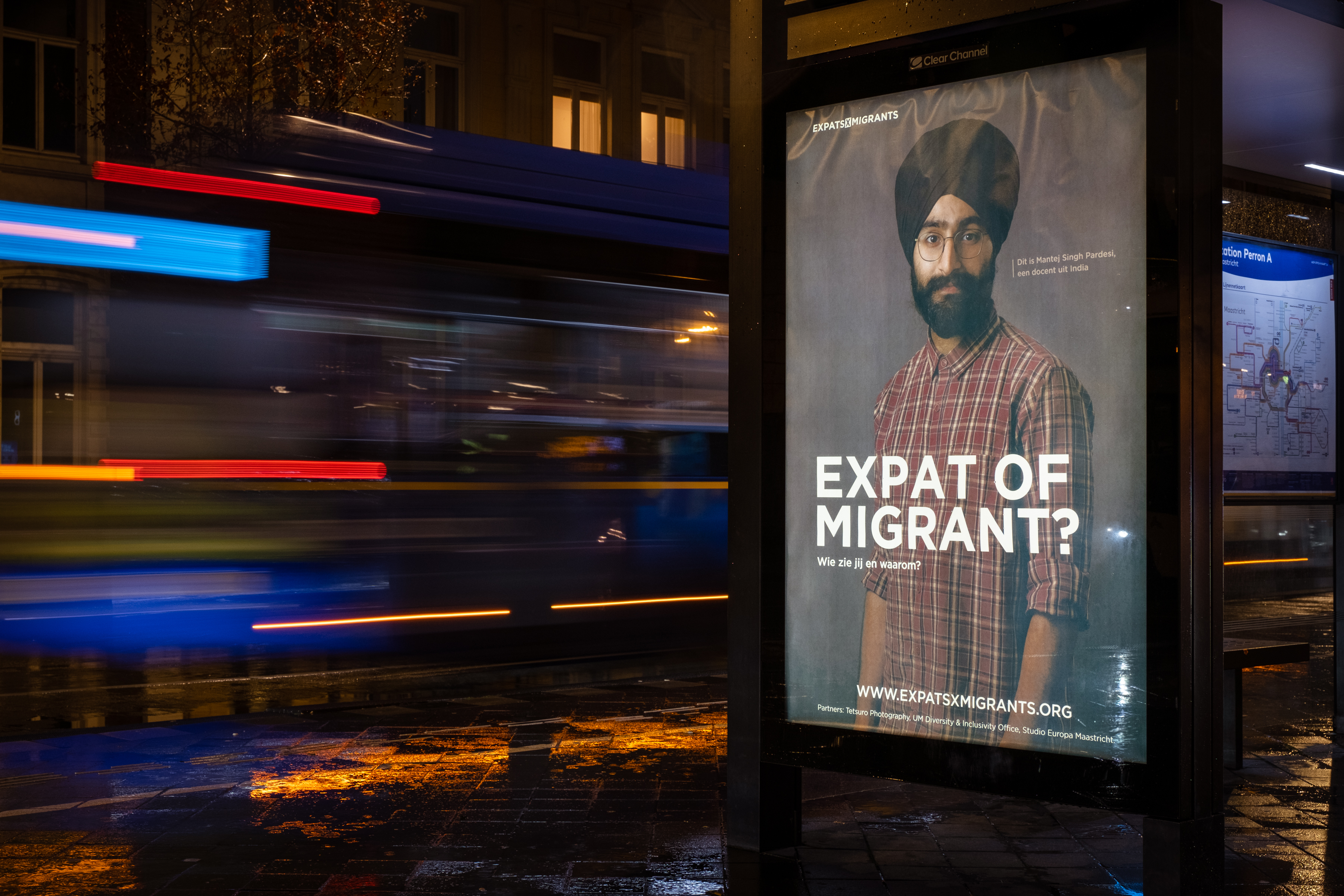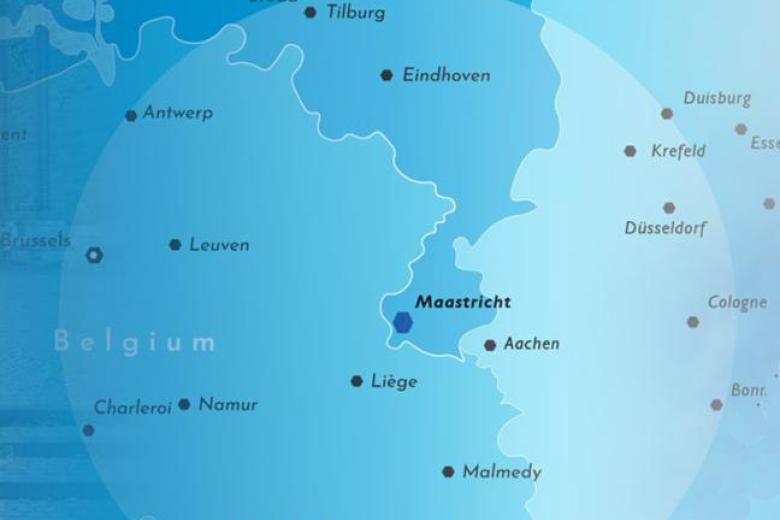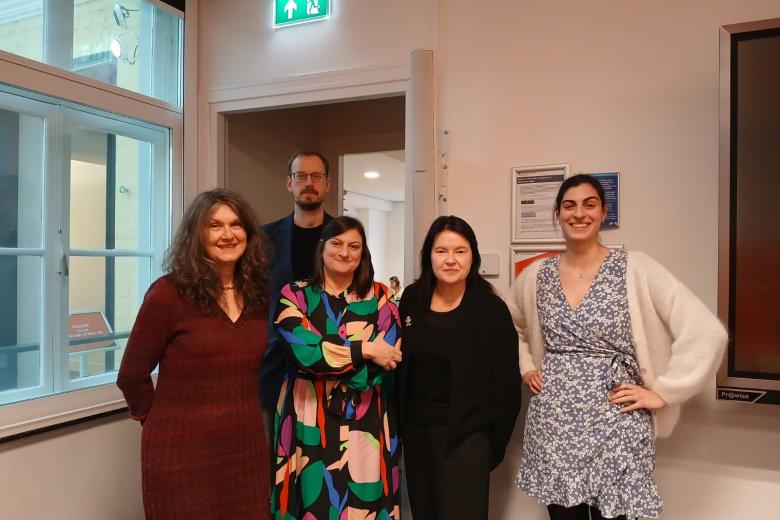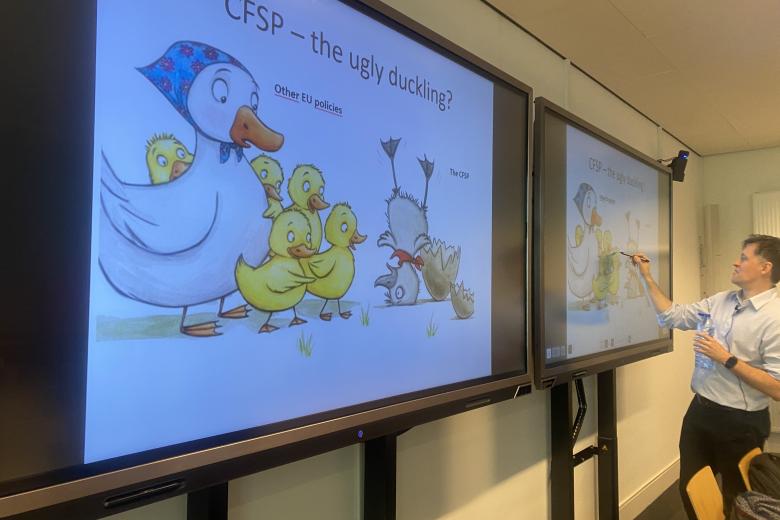Expats x Migrants: Segregating the Migrant Community
Do you see a migrant? Or do you see an expat? In the project ‘Expats x Migrants: Segregating the Migrant Community’ Tetsuro Miyazaki photographed 20 foreign professionals residing in Maastricht who identified themselves as migrants and/or expats. The rationale behind it? To make the viewer think about labels.
Labels are also what interests the Maastricht Centre for Citizenship, Migration and Development (MACIMIDE) - one of FASoS’ six research centres. They saw a perfect opportunity for collaboration when they heard about Tetsuro’s project idea.
Labels
With this project, Tetsuro wanted to challenge people to think about labels they may use subconsciously, and to confront them with their own biases. “I wanted to ask the audience who they saw, based on only a portrait picture, name, country of origin and profession; an expat or a migrant? I have always had a fascination for labeling. I want to understand why we use them and how we use them to self-identify and identify others. Labels can be enriching and limiting at the same time. An example of this are the labels ‘expat’ and ‘migrant’ that we use to describe people. People don’t want to live near asylum centres, but they don’t mind living next to an expat centre. We love the German researcher who has been living here for 15 years and barely speaks Dutch but we frown upon the person who cleans toilets and speaks Dutch to a limited extent.”
Tetsuro was able to carry out his project thanks to the cooperation with MACIMIDE researchers who, together, received a Maastricht University Diversity and Inclusivity Grant.
One of MACIMIDE’s Executive Board members, Prof. Valentina Mazzucato, saw great potential in the project. “In our centre, we also deal with questions of labels and categories, but then in research. Migration is a heavily debated topic in society, and everyone seems to have their opinions based on preconceptions. Collaborating with the Arts is a way to reach a broader public in a different way and to make these preconceptions more explicit. That’s how we knew we wanted to be involved in Tetsuro’s project.”
Non-academic
Tetsuro indicates that he was very grateful for the support he received from MACIMIDE in making this project a reality. “But at the same time, we needed to make sure that this would not become a project by and for the academic community as that was not the purpose of it. That goes for the people in the audience we wanted to reach, and for the people in front of the camera.”
Tetsuro photographed professionals who work in Maastricht and have a non-Dutch nationality. He sought representation from various age groups and parts of the world. “And I wanted at least half of the people that I photographed to have a non-academic background. I advertised that I was looking for ‘models’ and made a registration form for interested people to fill out with basic questions where they were from and what they did for a living. When I noticed not many people were signing up via the form, I decided to directly ask people if they would be interested in participating. What struck me was that some people said they thought they didn’t qualify to be photographed, as they did not see themselves as the classic example of a migrant or an expat. That got me thinking: what if there are more people who didn’t fill out the form because they think they don’t match these labels. That was already the first encounter with labels in my project and I hadn’t even shown anyone pictures yet.”
Besides looking for non-academic people in front of the camera, Tetsuro and Valentina also wanted non-academics to think about labels and maybe even reflect on prejudices they might have. “By only presenting at the MACIMIDE annual conference, we would be staying in the academic bubble and be preaching to the choir. We wanted to find a place where we could show the photographs to a large group of people, within the university buildings or in a museum would not serve that purpose,” Tetsuro says.

Audience
Thanks to a grant from Studio Europa, Tetsuro was able to put the pictures in bus shelters in Maastricht. Tetsuro explains: “we brought art to the advertising space. In this way, we reached the general public, and – literally - the common man on the street. After they were put up, I decided to walk around town and ask people who they saw when they looked at the pictures.”
“And that’s where things got interesting,” Valentina continues. “When Tetsuro asked the women and men on the street who they saw, an expat or a migrant, some people asked what an expat was. This shows that even the labels we use are familiar only within certain bubbles: in this case, the highly educated. The terminology fails to speak to the common man. This also teaches us an important lesson. Working with the Arts is a way to include the general public in our research. We are trying to do more of this at MACIMIDE. In the annual MACIMIDE conferences, we have taken to including a session on how to communicate to a broader audience the delicate issues around migration. Because the average person who doesn’t know what an expat is, will certainly not read the policy brief written by an academic. Including artists such as Tetsuro enables us to reach a more general audience.”
Impact
“Besides reaching an audience with your research, in an ideal world, you would like to make the audience think about your research and even influence courses of action. In other words, you want to create impact. And this is difficult, because how do you measure impact? Does impact mean that through Tweets you reached thousands of people? But have you changed their minds? Does it mean that you reached policy makers and have singlehandedly altered a country’s migration policy? I think in part, impact is about giving back. Giving back to society, but also giving back to those involved in your research project,” Valentina says.
“That was also something I struggled with in this project,” Tetsuro adds. “All these people were giving me their time and they let me take their picture, but what did I give back? I decided to ask my volunteers and they told me that the conversation I had with them before I took their picture was already enough. The time invested in them as a person, that someone would listen to their life story, that was all they wanted.”
Valentina concludes that “impact is not about quantity but about quality. I often deal with populations that do not engage in public debates because they are marginalized. But if even one of these research participants feels empowered by engaging with our research, impact has already been achieved.”
By Eva Durlinger
Pictures: Joey Roberts and Tetsuro Miyazaki
Also read
-
DigiMach places Meuse-Rhine Euroregion at the heart of industrial digitalisation
DigiMach (Digital Machining) is a new cross-border project uniting Belgium, Germany, and the Netherlands around a common goal: accelerating the digitalisation of the machining industry in the Meuse-Rhine Euroregion.
-
Globalisation & Law Network seminar with Áine Ryall
On 24 November 2025, the Globalisation & Law Network, together with the Institute for Globalisation and International Regulation (IGIR) held the seminar with Professor Áine Ryall.
-
Guest Lecture: Lóránt Havas explores current challenges in the EU’s CFSP
Lóránt Havas delivered a guest lecture on the EU’s evolving CFSP, discussing key legal developments, institutional challenges, and new defence instruments.